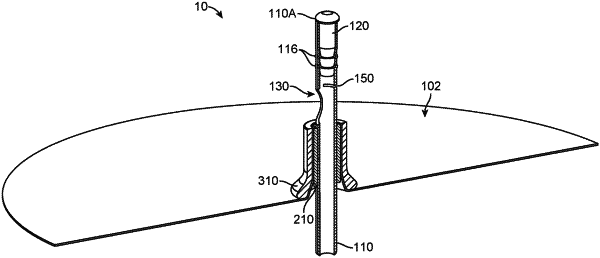| CPC A61F 5/0043 (2013.01) [A61F 5/003 (2013.01); A61F 5/0036 (2013.01); A61F 5/0089 (2013.01)] | 17 Claims |

|
1. A valve assembly for use with a balloon device having a fluid port, the valve assembly comprising:
a jacket member having an elongated shape, an outer surface and an interior channel, the interior channel comprising an engagement member;
a wall anchor positioned within the balloon device and adjacent to the fluid port, the wall anchor having an interior passage that receives the jacket member, where a portion of the balloon device adjacent to the fluid port extends into the interior passage of the wall anchor and is secured between the outer surface of the jacket member and the interior channel of the wall anchor;
a conduit extending through the interior channel of the jacket member, the conduit having a fill end and a balloon end, the balloon end comprising an interior section, wherein the conduit and the interior channel are configured to have a sliding resistance therebetween, the interior section comprising a weakened section and a fill opening, a portion of the interior section being occluded to prevent fluid from flowing therethrough;
the interior section having an interference region that is configured to become fixedly engaged within the interior channel when moved therein to assume a locking profile;
wherein the weakened section is located between the fill end of the conduit and the interference region, wherein the weakened section has a reduced tensile strength less than a tensile strength of the conduit while permitting sliding of the conduit relative to the interior channel upon an application of a pulling force on the conduit without causing separation at the weakened section, wherein the reduced tensile strength requires a tearing force to cause separation of the conduit at the weakened section; and
wherein the fill opening is located at the interior section between the fill end and the interference region and, in a fill configuration, the fill opening is positioned within the balloon device such that fluid entering the fill end exits at the fill opening into the balloon device, where application of the pulling force that overcomes a sliding resistance causes movement of the fill opening and the interference region into the jacket member creates a sealed configuration to seals to seal the balloon device.
|